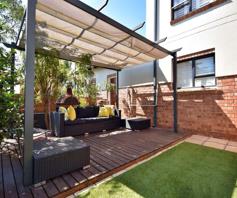 This technology, to be used at the new Burgundy Estate at the foot of Tygerberg Hill and also used by US Homelands Security, the Beijing Olympics and US and European trains, operates on a massive wireless grid that can immediately pinpoint residents' exact location and identify them if they should press a remote panic button anywhere in the estate. It also offers residents the fastest wireless broadband Internet access in South Africa, voice over internet protocol (VOIP) and other applications.
This technology, to be used at the new Burgundy Estate at the foot of Tygerberg Hill and also used by US Homelands Security, the Beijing Olympics and US and European trains, operates on a massive wireless grid that can immediately pinpoint residents' exact location and identify them if they should press a remote panic button anywhere in the estate. It also offers residents the fastest wireless broadband Internet access in South Africa, voice over internet protocol (VOIP) and other applications.A network of pan-and-tilt and fixed surveillance cameras throughout the estate serves as the backbone. These are wirelessly linked to the control room and fitted with speakers so that the control room can challenge suspected intruders and follow them as they move through the estate (day and night).
Thanks to the powerful video streaming ability of the wireless grid, a live feed of the emergency is fed to the closest patrol car, keeping security personnel updated on the situation as they close in.
Also connected to this intelligent grid is a series of detectors covering the estate, constantly checking for gas, air and other leakages. The system can even pick up the thrashing of a pet falling into a pool and can be pre-programmed with an appropriate response.
When detected, the system sets off an alarm and immediately feeds video images to the control room, which are relayed to the closest patrol car so that officers may act appropriately, armed with the correct situational information.
In the case of a camera malfunctioning or being knocked over, adjacent cameras will automatically self-heal and self-tune to help re-route the streaming data traffic to the nearest radio. Cameras that lose their connection to the control room will also automatically reroute their video feed via the next node.
As a value-added service residents can also request that any alarms or video feed fitted to their homes can be automatically transmitted to their cell phones or wireless, enables computers, keeping them in touch from afar with the situation at home at all times.
Paul Edwards, CEO of Satinlink, the makers of the technology, says that unlike traditional access points that offer limited coverage within predefined hot spots, Satinlink's system provides wireless zones that can extend over hundreds of square kilometres, with the same efficiency as in smaller hot zones allowing endless applications.
Burgundy Estate will be the first residential development of this scale in the world offering residents comprehensive wireless security and emergency response.
"The system allows us to ensure the highest level of security for our residents without going to the extreme of having to wall the entire estate and create a closed-in atmosphere so common with security estates," says John Coetzee, managing director of Burgundy's development consortium Visigro.
"In terms of connectivity, it also allows us to deliver a service to mobile users who want citywide, uninterrupted service."
For more information click here to visit the website.
Readers' Comments
Have a comment or question about this article? Tell us about it..
Property News
Click here for more property news articles.
Need a blog?
Start your own blog with a free blog from 24.com.








